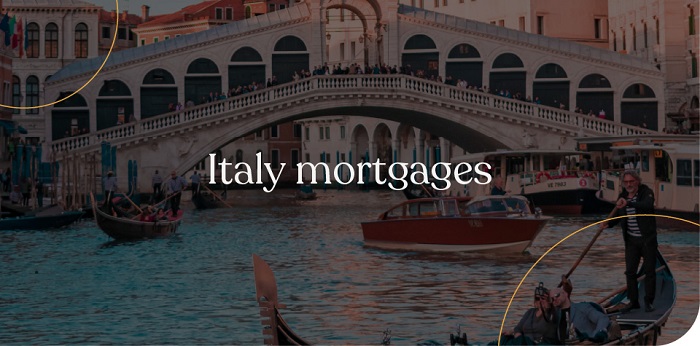Welcome to our comprehensive guide on getting a mortgage in Italy as a foreigner. In this guide, we will take you through the entire process of obtaining an Italian mortgage, from understanding the requirements to finding the right lender and navigating the application process. Whether you’re looking to purchase your dream home in Italy or invest in the Italian property market, this guide will provide you with all the information you need to make an informed decision. So let’s get started!
Understanding the Italian Mortgage Market
Before diving into the details of obtaining a mortgage in Italy as a foreigner, it’s important to have a basic understanding of the Italian mortgage market. Italy has a well-developed mortgage industry, with a variety of lenders offering different loan products. The market is regulated by the Bank of Italy, ensuring transparency and fair practices. However, it’s important to note that the mortgage landscape in Italy may differ from what you’re accustomed to in your home country. So let’s explore the key aspects of the Italian mortgage market:

1. Mortgage Types
In Italy, there are several types of mortgages available to borrowers. The most common types include:
- Fixed-Rate Mortgage: A fixed-rate mortgage offers a locked-in interest rate for the entire duration of the loan, providing stability and predictable monthly payments.
- Variable-Rate Mortgage: A variable-rate mortgage, also known as an adjustable-rate mortgage (ARM), has an interest rate that fluctuates over time based on market conditions.
- Interest-Only Mortgage: An interest-only mortgage allows borrowers to only pay the interest on the loan for a certain period, typically 5-10 years, before starting to repay the principal.
- Mixed-Rate Mortgage: A mixed-rate mortgage combines elements of both fixed-rate and variable-rate mortgages, offering an initial fixed rate for a certain period, followed by a variable rate.
2. Loan-to-Value (LTV) Ratio
The loan-to-value ratio represents the percentage of the property’s value that the lender is willing to finance. In Italy, foreign borrowers can generally obtain a mortgage with an LTV ratio of up to 80%, depending on the lender and the specific circumstances. However, it’s important to note that borrowing at a higher LTV ratio may result in a higher interest rate or additional requirements.
3. Mortgage Duration
The typical mortgage duration in Italy ranges from 5 to 30 years. The duration you choose will affect your monthly payments and the total amount of interest paid over the life of the loan. It’s important to consider your long-term financial goals and budget when selecting the mortgage duration.
4. Interest Rates
The interest rates for Italian mortgages can vary depending on various factors such as the type of mortgage, market conditions, your creditworthiness, and the loan-to-value ratio. It’s important to shop around and compare offers from different lenders to ensure you secure the best possible rate.
Requirements for Foreign Borrowers
As a foreigner, there are certain requirements you must fulfill to be eligible for a mortgage in Italy. While specific requirements may vary from lender to lender, here are the general guidelines:
1. Valid Residence Permit
In order to apply for a mortgage in Italy, you’ll need to have a valid residence permit. This permit allows you to reside in the country legally and is typically issued for a specific duration.
2. Income and Employment Stability
Italian lenders will assess your income and employment stability to determine your ability to repay the mortgage. You’ll typically need to provide documentation such as income tax returns, employment contracts, and bank statements to verify your income and employment status.
3. Down Payment
It’s important to have a sufficient down payment when applying for an Italian mortgage. While the exact amount may vary, most lenders require a down payment of at least 20% of the property’s purchase price.
4. Good Credit History
Having a good credit history is crucial when applying for a mortgage in Italy. Lenders will review your credit report to assess your creditworthiness and determine the interest rate you qualify for. It’s important to review your credit report beforehand and address any issues or discrepancies.
Finding the Right Lender
Once you understand the requirements and have all the necessary documentation in order, the next step is to find the right lender for your Italian mortgage. Here are some key factors to consider when selecting a lender:
1. Reputation and Experience
It’s important to choose a lender with a good reputation and extensive experience in the Italian mortgage market. Look for lenders who have a solid track record of providing competitive rates, excellent customer service, and a smooth application process.
2. Interest Rates and Fees
Compare the interest rates and fees offered by different lenders to ensure you’re getting the best deal. Pay attention to any additional fees or charges that may be associated with the mortgage, such as appraisal fees or early repayment penalties.
3. Customer Service
Obtaining a mortgage can be a complex process, especially as a foreigner. Choose a lender that offers excellent customer service and has English-speaking representatives who can guide you through the application process and address any questions or concerns you may have.
4. Flexibility and Additional Services
Consider the flexibility and additional services offered by the lender. For example, some lenders may provide options for making extra repayments or offer mortgage products specifically designed for foreign borrowers.
The Mortgage Application Process
Now that you have a clear understanding of the requirements and have chosen the right lender, it’s time to navigate the mortgage application process. Here’s a step-by-step guide:
1. Pre-Approval
Before starting your property search, it’s advisable to obtain a pre-approval from your chosen lender. A pre-approval will give you a clear idea of your budget and demonstrate to sellers that you’re a serious buyer.
2. Property Evaluation
Once you’ve found your dream property in Italy, the lender will conduct a property evaluation to determine its market value. This step is important for both the lender and the borrower to ensure the property’s value aligns with the loan amount.
3. Finalizing the Mortgage Offer
After the property evaluation is complete, the lender will provide you with a formal mortgage offer outlining the loan terms, interest rate, and any additional conditions or requirements.
4. Legal Assistance
As a foreigner, it’s highly recommended to seek legal assistance from an Italian attorney specializing in real estate transactions. A legal professional will review the mortgage offer, negotiate on your behalf, and ensure all legal aspects are handled correctly.

5. Signing the Mortgage Deed
Once all the legalities are sorted, you’ll be required to sign the mortgage deed in the presence of a notary public. The mortgage deed is a legally binding document that outlines the terms and conditions of the loan.
6. Completion and Disbursement
After signing the mortgage deed, the lender will complete the disbursement process and transfer the funds to the seller or their representative. This step finalizes the mortgage process, and you officially become the owner of the property.
Congratulations! You’ve reached the end of our guide on getting a mortgage in Italy as a foreigner. We hope this guide has provided you with valuable insights and information to navigate the Italian mortgage market with confidence. Remember, obtaining a mortgage in a foreign country can be a complex process, so it’s important to do thorough research, seek professional advice, and partner with a reputable lender. With the right preparation and guidance, you’ll be one step closer to owning your dream property in beautiful Italy. Best of luck!
